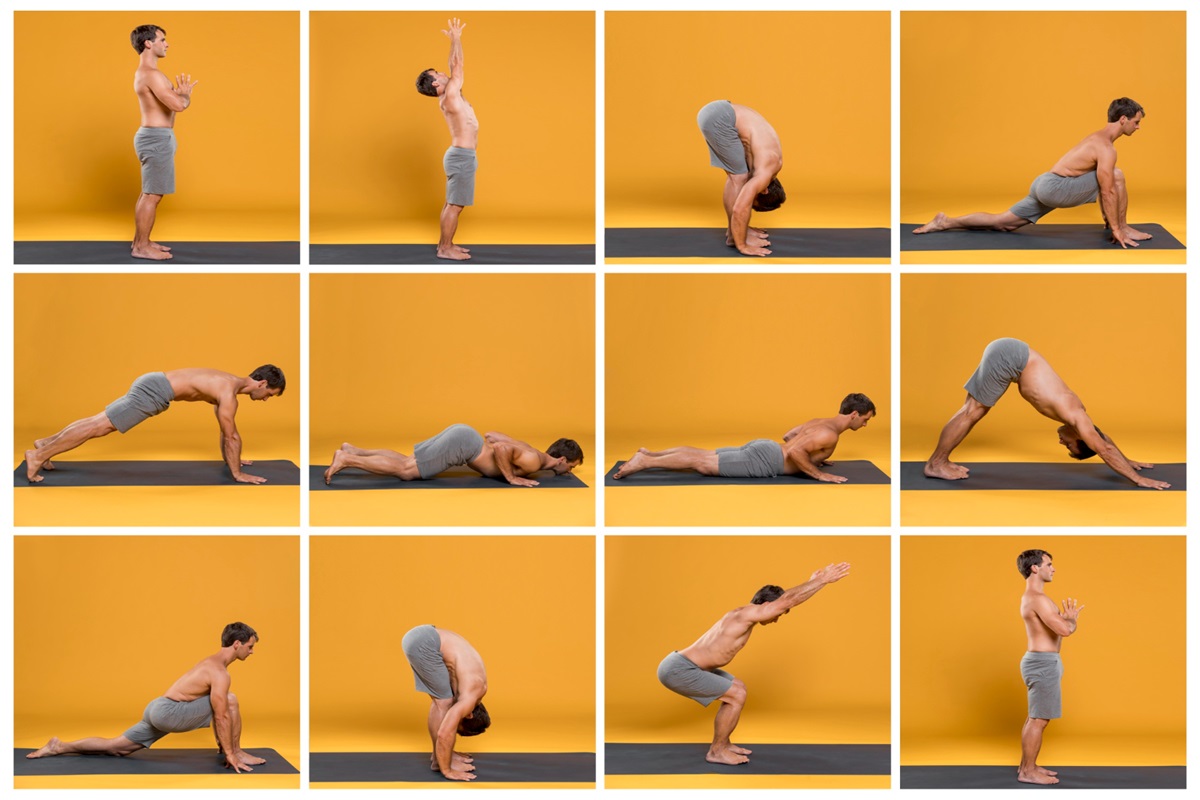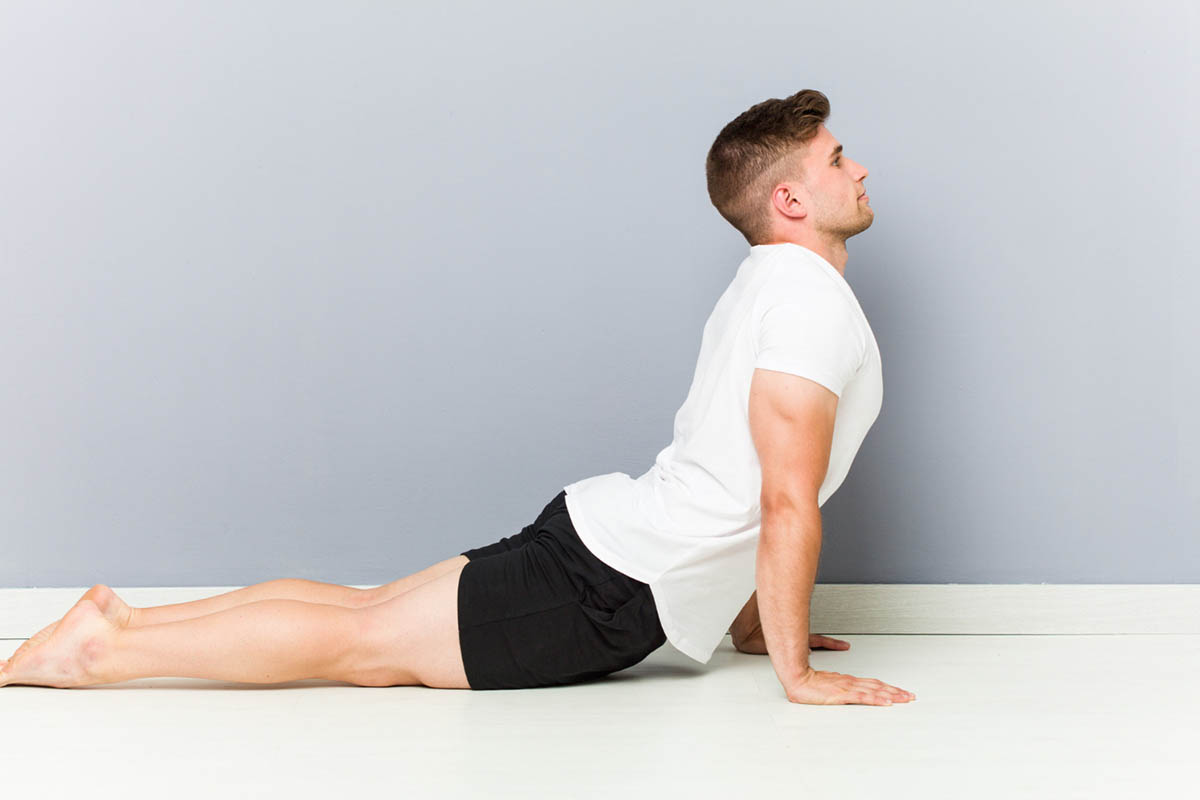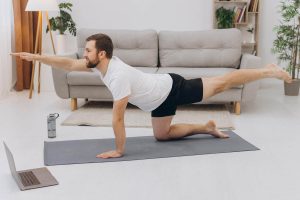Posture is vital in overall spinal health, mobility, and musculoskeletal balance. Poor posture, often caused by sedentary time, screen time, habitual movements, and muscle imbalances, can lead to neck pain, upper back discomfort, and forward head posture. Over time, these issues contribute to rounded shoulder postures, anterior pelvic tilt, and chronic stress on the spine, …
12 Best Posture Correction Exercises for a Stronger Back

Posture is vital in overall spinal health, mobility, and musculoskeletal balance. Poor posture, often caused by sedentary time, screen time, habitual movements, and muscle imbalances, can lead to neck pain, upper back discomfort, and forward head posture. Over time, these issues contribute to rounded shoulder postures, anterior pelvic tilt, and chronic stress on the spine, making movement less efficient and increasing the risk of musculoskeletal pain.
The good news is that posture correction exercises can help improve spinal alignment, core stability, and joint mobility, reducing pain and promoting better movement patterns. This guide covers 12 effective exercises for posture correction, combining stretching, strengthening, and stabilizing exercises to correct imbalances and promote a neutral spine. Whether you’re experiencing slouched shoulders, upper limb muscle fatigue, or an anterior pelvic tilt, these exercises will help you relieve upper back pain, restore body awareness, and build a strong foundation for long-term posture correction.
Why Posture Matters
Posture is essential for maintaining spinal health, movement efficiency, and overall well-being. Poor posture strains the spine, muscles, and joints, leading to misalignment, chronic pain, and reduced mobility. Over time, issues like slouched shoulders, forward head posture, and anterior pelvic tilt can cause upper back pain, neck strain, and lower back discomfort. Incorporating posture correction exercises can help restore alignment and prevent long-term complications.
Beyond spinal health, posture affects breathing, digestion, and energy levels. A hunched position compresses the diaphragm and ribcage, limiting oxygen intake and reducing lung capacity. Due to increased abdominal pressure, this can lead to fatigue, reduced concentration, and slower digestion. An upright posture supports better circulation, organ function, and sustained energy levels throughout the day.
Several factors contribute to poor posture, including sedentary time, excessive screen use, muscle imbalances, and repetitive movement patterns. Sitting for long hours encourages text neck and forward head posture, while weak deep neck stabilizers and rhomboids disrupt spinal alignment. Carrying heavy bags unevenly, chronic stress, and improper lifting techniques further strain the body, causing postural dysfunction. Genetics and medical conditions can also influence posture, making posture correction exercises and ergonomic adjustments essential for long-term spinal health.
12 Best Posture Correction Exercises

An exercise for a posture correction program can significantly reduce discomfort in the shoulders, mid-back, and lower back. Strengthening key postural muscles and improving spinal alignment helps alleviate strain, enhance mobility, and prevent recurring pain. Regular practice of an exercise for posture correction retrains muscles and improves joint mobility, lowering the risk of long-term spinal issues and promoting better postural stability.
1. Child’s Pose
Child’s Pose is a gentle posture correction exercise that stretches the lower back and spine, relieving built-up tension and promoting spinal alignment. This stretch helps release tight muscles in the shoulders and neck, making it effective for those experiencing upper back discomfort due to poor posture. Elongating the spine and relaxing the gluteus maximus and hip flexors also enhance mobility and flexibility in the lower body. Holding this position while practicing deep breathing improves body awareness, reducing muscle stiffness and postural imbalances.
2. Cat-Cow Stretch
The Cat-Cow Stretch is an excellent spinal mobility exercise that improves postural alignment and flexibility. Moving between the arched and rounded back positions enhances the range of motion in the thoracic spine, making it an effective way to counteract prolonged sedentary time. This movement also engages the core muscles, including the deep neck stabilizers and transverse abdominis, reinforcing neutral spine positioning. Incorporating this stretch regularly can help correct anterior pelvic tilt, reduce upper back tension, and promote better movement coordination.
3. Wall Angels
Wall Angels help strengthen the upper back muscles while reinforcing scapular stabilization and shoulder mobility. Performing this exercise improves the alignment of body structures, particularly in those suffering from rounded shoulders due to excessive screen time and forward head posture. It activates the middle trapezius and rhomboids, counteracting the effects of habitual movements that cause slouched shoulders. Practicing Wall Angels consistently enhances upper limb muscle endurance, crucial for maintaining an upright posture throughout daily activities.
4. Doorway Chest Stretch
The Doorway Chest Stretch is an effective posture correction exercise for opening tight chest muscles that contribute to rounded shoulders and poor spinal alignment. This movement counteracts the effects of prolonged desk work and forward head posture, helping restore proper postural habits. Stretching the anterior shoulder and pectoral muscles improves scapular retraction and spinal mobility. Regularly incorporating this stretch improves joint mobility and reduces muscle imbalances, leading to more balanced muscle engagement in the upper body.
5. Chin Tucks
Chin tucks are essential for strengthening deep neck stabilizers, which help correct forward head posture and reduce neck pain. This simple yet effective movement engages the upper trapezius and cervical muscles, reinforcing proper head positioning and spinal alignment. Regular chin tucks prevent neck strain, text neck, and upper limb muscle fatigue, making it a valuable addition to any posture correction routine. Over time, this exercise contributes to better balance, improved body awareness, and reduced tension in the upper back.
6. Standing Rows with Resistance Band
Standing rows using a resistance band effectively strengthens the upper back muscles, counteracting postural misalignments caused by prolonged sitting and slouched shoulders. This exercise activates the rhomboids, middle trapezius, and rear deltoids, which play a crucial role in scapular stability and spinal support. Regularly incorporating standing rows can help correct muscle imbalances, relieve upper back pain, and promote neutral spine positioning. This movement is particularly useful for those experiencing postural fatigue from repetitive training or excessive sedentary time.
7. Seated Band Pull-Apart
The Seated Band Pull-Apart engages the shoulder and upper back muscles, making it an effective posture correction exercise for those with rounded shoulders and weak scapular stabilizers. This movement helps reinforce the proper alignment of body structures, ensuring balanced muscle engagement in the posterior chain. Strengthening the middle trapezius and rhomboids counteracts the effects of forward head posture and excessive screen time. This exercise consistently improves scapular mobility, shoulder stability, and upper body posture.
8. Glute Bridge
The Glute Bridge is a fundamental core stability exercise that strengthens the lower back, gluteus maximus, and hamstrings, promoting pelvic alignment and spinal support. This movement is especially effective for addressing anterior pelvic tilt, a common postural imbalance caused by prolonged sitting. Strengthening the hip flexors and lumbar region helps stabilize the neutral spine position, reducing lower back pain and muscle tension. Adding Glute Bridges to a posture correction routine improves spinal alignment, lower body stability, and postural endurance.
9. Bird-Dog Exercise
The Bird-Dog Exercise enhances core stability, spinal alignment, and overall balance, making it a valuable addition to any posture correction routine. This movement strengthens the deep core muscles, serratus anterior, and spinal erectors, which play a key role in maintaining an upright posture and preventing muscle imbalances. Regular exercise promotes joint mobility and postural endurance, reducing lower back and shoulder strain. Bird-Dog also improves neuromuscular coordination, reinforcing proper spinal mechanics and movement control.
10. Superman Exercise
The Superman Exercise strengthens the lower back, glutes, and posterior chain, encouraging better spinal extension and postural support. By activating the paraspinal muscles, rhomboids, and middle trapezius, this movement counteracts the effects of slouched shoulders and excessive screen time. Practicing this exercise regularly can help alleviate musculoskeletal pain, improve spinal mobility, and reinforce neutral spine positioning. Superman is particularly useful for those experiencing weakness in the lower back due to prolonged sedentary time or habitual slouching.
11. Prone Y-T-W Stretch
The Prone Y-T-W Stretch targets postural muscles, improving shoulder mobility and upper back endurance. This movement strengthens the middle trapezius, rhomboids, and serratus anterior, effectively correcting rounded shoulders and upper limb muscle fatigue. Performing this stretch regularly enhances scapular stabilization and thoracic spine mobility, helping prevent postural misalignments and muscular imbalances. This exercise promotes better spinal alignment and upper body function by reinforcing proper postural habits.
12. Plank Variations
Planks are a powerful posture correction exercise that builds core endurance and supports an upright posture. Strengthening the deep core muscles, gluteus maximus, and hip stabilizers helps maintain a neutral spine and balanced muscle engagement. Plank variations such as the forearm plank, side plank, and shoulder blade push plank to enhance scapular stability and core strength, reducing the risk of postural dysfunction. Planks into a daily routine improve spinal alignment, posture endurance, and functional movement control.
Tips for Maintaining Good Posture

Creating an ergonomic workstation helps maintain spinal alignment and supports back pain treatment by reducing strain. Taking movement breaks and timer reminders prevent sedentary time, contributing to chronic back pain. Engaging in exercise snacking with frequent posture correction exercises helps relieve muscle fatigue and stiffness. Wearing supportive shoes improves postural habits and joint mobility, reducing stress on the lower back. Incorporating self-massage and foam rolling can ease musculoskeletal pain, making it a useful addition to back pain treatment.
Research shows poor posture is common among children and adolescents, with 65.3% experiencing postural imbalances. Around 3.7% required radiographic evaluation, highlighting the need for early posture correction interventions. Developing healthy postural habits early can prevent musculoskeletal pain, mobility restrictions, and spinal misalignment in adulthood.
At Sustain Physical Therapy and Performance, we provide expert care to help you improve your posture, spinal alignment, and overall movement efficiency. Our personalized treatment plans focus on posture correction exercises, back pain treatment, and injury prevention to address muscle imbalances and chronic discomfort. Whether recovering from an injury or looking to enhance postural stability and mobility, our skilled team offers evidence-based physical therapy to support your long-term health. Take control of your posture and movement with our specialized care.
Conclusion
Practicing posture correction exercises consistently can help relieve upper back pain, improve spinal alignment, and counteract the effects of forward head posture and muscle imbalances. Strengthening key postural muscles, improving flexibility, and maintaining body awareness will contribute to long-term improvements in posture and mobility. Integrating these exercises into your daily routine and making ergonomic adjustments can prevent postural dysfunction and enhance overall movement efficiency. Prioritizing proper posture will reduce discomfort and support better spinal health and long-term well-being.
FAQs
Can you correct years of bad posture?
Consistent posture correction exercises, ergonomic changes, and mindful movement can help you retrain your body for better alignment. Over time, strengthening weak muscles and improving mobility will help restore proper posture and reduce discomfort.
How long does it take to fix posture?
You may notice some improvements within a few weeks, but achieving lasting changes requires consistent effort and patience. The duration depends on muscle strength, flexibility, and daily habits.
Are posture braces effective for correcting posture?
Posture braces can provide short-term support by keeping the spine aligned, but they are not a permanent solution. They should be used alongside strengthening exercises and mobility training to ensure long-term correction.
Dr. Adam Babcock PT, DPT
“We Help Active Adults Quickly Recover From Pain Or Injury So They Can Stay Active, Get Back To What They Love To Do, and Do It For Decades”






